INTUITIVE WISDOM | Celine Germain
- withitgirl
- Apr 4, 2022
- 12 min read
Updated: May 16, 2022


Let's introduce our readers to some Hawaiian concepts that inform your practices of surfing+ art + Body Based Intuitive consulting.
I always ask permission first. Before I surf (I chant an oli- a Hawai'ian chant of asking for permission). Before I work with a client (I ask permission for their body and guidance and do a Land Acknowledgment). Before making jewelry (I ground and center myself with the materials and my body). It is all a spiritual practice through which I believe I am a conduit for the life force to move through. Without permission, my ego gets involved. When that happens, I either injure myself, ruin a stone or push too hard and find myself struggling or misunderstood. My main goal is to approach everything I do with ease and grace.
When did you start surfing, and what do you want to tell us about what you have learned? Has there been an event (s) that have shaped or deepened your relationship with surfing?
I started surfing later in my life, even though I was raised on the beaches of Waikiki, specifically Kaimana Beach. I was a swimmer and swam competitively in high school. My love for wave riding didn't come until my early 20s. Surfing and being in the ocean is a spiritual experience for me and the place where I have done the most transformative work on myself. It's where I've had to learn to be the most humble and present. Surfing amplifies my aggressive and self-competitive nature, without a mindful presence, I have found myself in harrowing situations. In the beginning, going for a surf was fun and challenging but not something that I could do casually. I was always striving to be better, surf harder, longer, and in bigger waves. I was really tough on myself. I wanted to stand out somehow, to prove to myself and others that I was capable of something unique and magnificent.
In 2008 I moved to Ocean Beach to live at the surf break that I had been surfing for years. But Kanaloa (the god of the sea and tides) had different lessons for me. As I evolved my skill (I still consider myself an intermediate surfer at best), I wanted to challenge myself in bigger and bigger waves. Living at Ocean Beach in San Francisco meant I had all the 10+ foot waves I could ever want, and I was excited for it to be in my backyard, but my propensity for self-criticism would rear its ugly head and get in my way. If I didn't catch a ton of waves, had a hard time paddling out, or if I ate it on a good wave, I'd beat myself up. There were many years in which I would come out of the water crying or angry, frustrated as if somehow I had failed. If you have ever surfed OB, you know that it's the least friendly wave in the world regarding conditions and power. Just getting out can be a challenge. When I became interested in surfing bigger waves, that inner critic got louder. I'd push myself harder and seek out situations that made me feel the intensity of the failure or the high of the success.
I don't think that either state is the reason to surf.
By 2015 I had been surfing 18-20 foot waves for a few years and was out at OB on a day that was 8' 18 seconds. The wave faces were at least 15-18 feet. I'd been surfing for 3 hours with my husband and decided to head in during what I thought was a lull. Of course, the ultimate set came, and I took every wave on the head, tombstoning and climbing my leash to get a quick gasp of air before the next one came. There were 6 waves in that set. As I was reaching the surface of the third wave, I felt something crash into my face. It hit hard, and I felt my whole head slam backward. When I came up, I wiped the water away from my eyes and saw a lot of blood, but I knew more waves were coming, so I took half a breath and went down again. I still had to make my way in when the set was over. With the next surge of 10 feet of white water, I climbed on my board and rode on my belly, overtaken multiple times before making it to the shore. When I got to shore, I realized my face had been ripped open, and I sustained what by then was my third concussion while surfing.
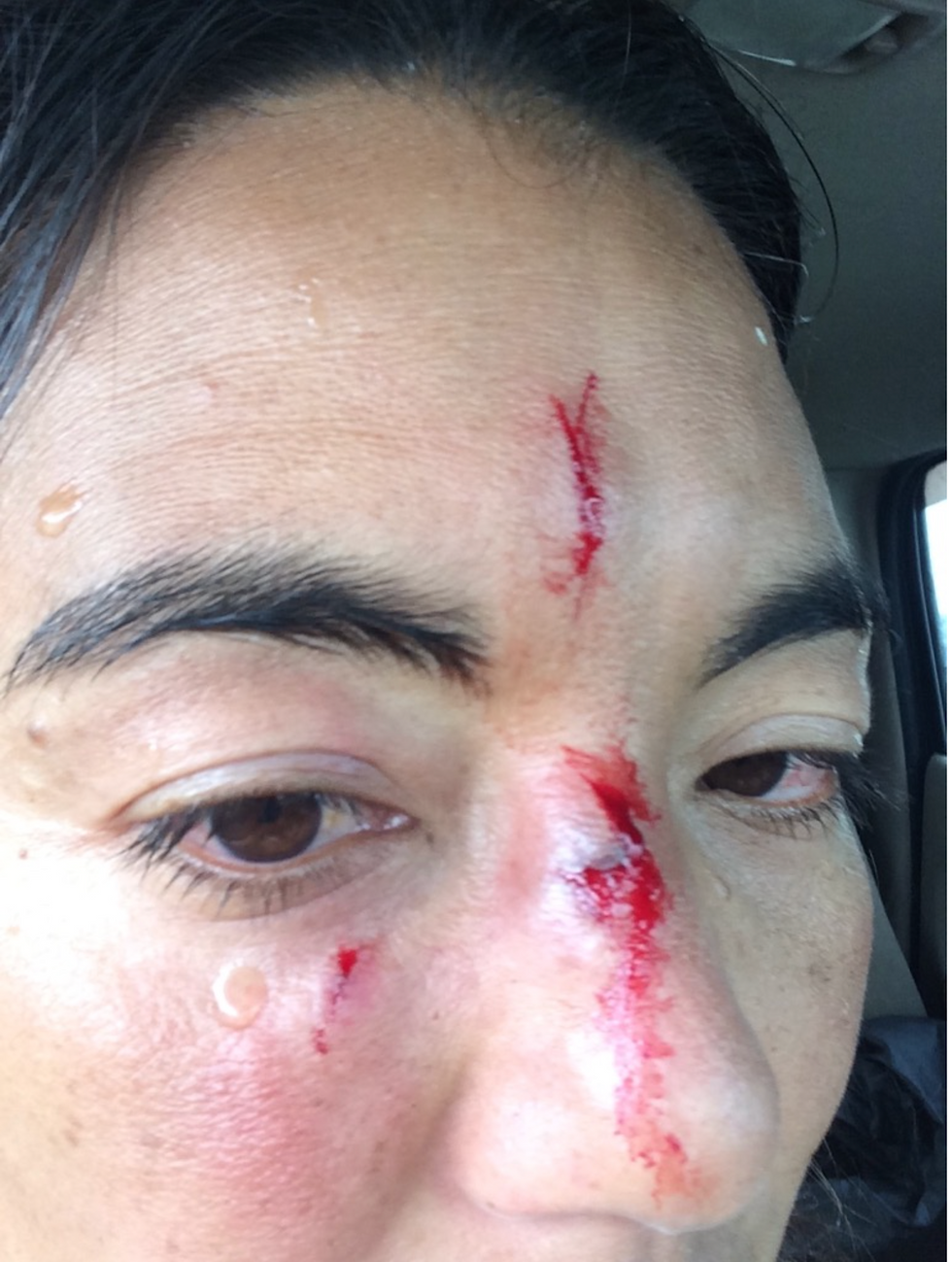
Concussion symptoms are cumulative. The more you have, the worse the recovery. This concussion took me 4 years to work through, and even though I was still surfing, my relationship with it had to change. I developed massive anxiety and depression, brain fog, word retrieval and sound issues, social overwhelm, and severe PTSD. My brain couldn't take input. My brain was reacting to the injury, which resulted in PTSD, even around waves that weren't even 3 feet. Terror surrounded my relationship with the water. I found that the inner critic's voice was even worse now. I couldn't stop comparing myself to the person I once was and the person I wanted to be.
I believe that life had other lessons for me. The entire trajectory of my work on myself took time, as did the concussion symptoms.
The primary lessons I had to learn were:
*Stop pushing myself, especially if I wasn't feeling called to do something (this applies to every aspect of life).
*Listen to the inner voice. If it's clear, then there is a sense of calm.
*Seek the experience of ease and grace.
*Just because you can, doesn't mean you should.
*If it doesn't feel good, don't do it.
*It's ok to get out if you aren't in the groove. Not all surf sessions have that flow to them. It's ok.
*The primary reason to surf is to be in connection to the ocean, Spirit, and myself.
*There's no trophy or reward, just the experience.
*No one is watching you. No one cares about your surfing.
*The ocean knows your state. It will match your energy. *You cannot hide your feelings from her.
Now when I surf, it's always a joy. When I feel like it, I go where I feel the energy, and I don't let others influence where I want to be. I surf until the voice inside me says, "that's enough," even if there are still more waves. I always listen to myself and match that feeling of centeredness; otherwise, I don't get in the water. I take care of my body before and after I surf, giving it what it wants, including rest and breaks. If the vibe out there is too agro, I go to a different spot or let myself get out. I wholeheartedly listen to my intuition as I surf, I quiet my ego-mind, and I seek centeredness over anything else.
I still like surfing bigger waves, but I don't push myself anymore and have downgraded myself to waves that may reach 12 feet, but only if it feels right. To be honest, I don't miss the adrenaline spike. Instead, I found that the sense of being in tune is far longer lasting than the highs (and lows, thankfully!) and is much more pleasurable.
Do you do other sports?
I love swimming and have found that cold water swimming in the Bay is exhilarating. I blew out my knee surfing in 2019 and used swimming to rehab myself. Sometimes I like swimming even more than surfing.
Who are the surfers (women) that have made a lasting impact on your surfing practice?
Any woman over 50 who surfs with grace and Aloha. They are my heroines. They are the non-famous women in the waters who aren't interested in their bikinis or their hair. They are just out there for the pure love of the water. But I also love Carissa Moore because she is pure Aloha and her style and power are a pleasure to watch in action. She's a local girl like me.
What advice would you give to beginner surfers?
Watch many videos and competitions to see all the different styles that women have surfing. See which one fits how you feel in your body. Watch as much of her/them as you can. We learn a lot by watching. Our brains and our bodies will attempt to mimic what we see. If you try to mirror someone who doesn't feel like you, you'll never learn that style. It has to fit.
Be yourself in the water. Let your own curiosity be the guide to your progression, not your ego pushing you. If you aren't having fun, get out and try again another day. There's always more surf.
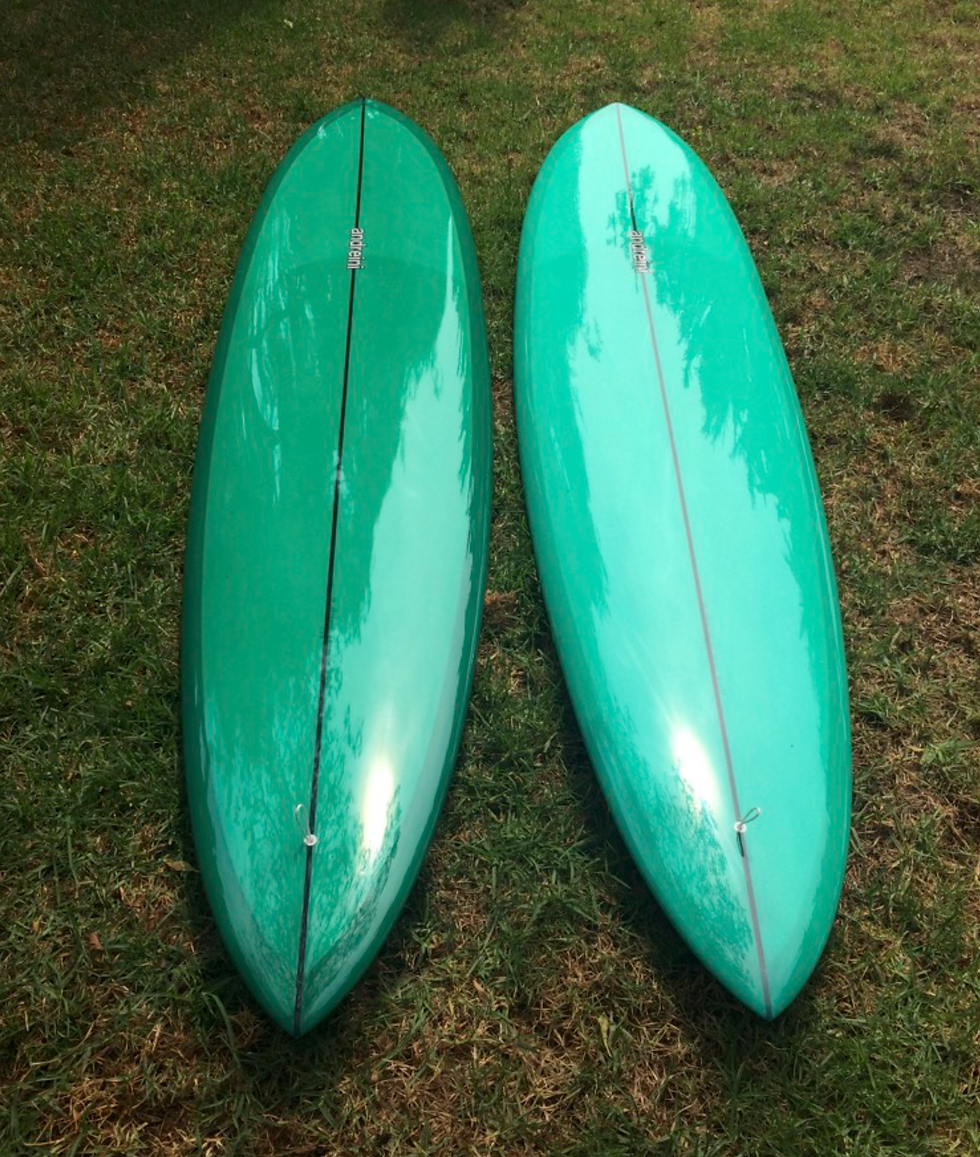
What are/have been your favorite boards?
All-time fave boards are an 8'4" Andreini Serena (I love so much I have two, one here and one in Hawaii), 9'0" Andreini Poor Boy, Andreini Magic Sam 9'0", also my Schaper 9'0 Bonga Perkins High Performance board, 9'6" Saurich Gun.
If I had to have a two board quiver, it would be my Serena and my Schaper. I've used them both in 2 foot to 15' waves. We just got a 9'4" log from Mike Wallace of Iconoclast that's modeled after the CJ Nelson Sprout model so I can practice nose riding even though I'm more of a high-performance big-boarder surfer. There are so many things to learn about surfing, part of my relationship with it is to keep trying new things. I have a ton of other boards, but these 5 are my go-to's.
Home Break's/Fave surf spots: Publics and Bowls on the south shore, Sunset, Laniakea, and Pua'ena point on the north shore. P,Q, R,S at OB.

You have a vibrant family history, especially in the jewelry business. Tells us about MING's.
Ming's is an old Hawaiian jewelry company started and run by two of my grandfather's siblings in 1940, Wook Moon and Sylvia (Moon) Gomberg. It was known as the "Tiffanys of the Pacific, " featuring many traditional Chinese designs carved in gold and Native Hawaiian floral designs like pikake flowers in ivory or jade and pearl pieces which all have come back in style. Mings closed in 2002 and has been highly collectible and continues to influence Hawaiian contemporary jewelry designs.
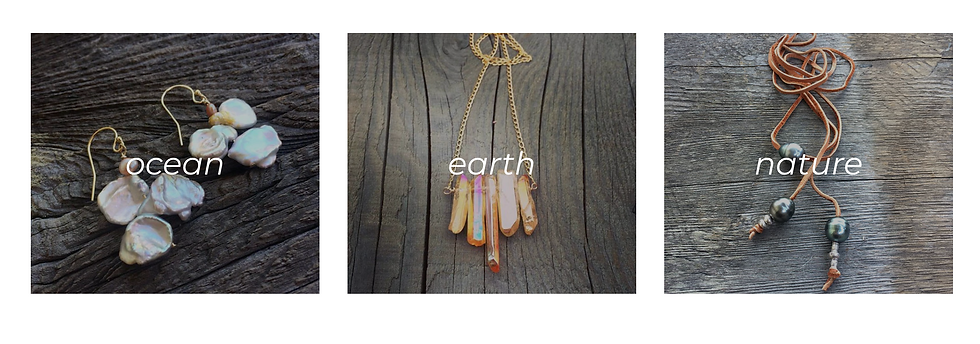
What prompted you to start making jewelry?
I took a couple of years of jewelry making in high school and initially went to art school for jewelry but switched majors and studied photography and printmaking, doing a lot of installation work while at CCAC. When I got out of art school, I didn't touch art-making for almost 15 years, something in the process of going to school killed my interest in art, but I was always making things with my hands. I switched focus and became a bodyworker. For many years that satisfied my need for the creative process.
Even though I wasn't making jewelry, I always wanted to get back to it. I would buy stones and findings when I'd see something I liked. Eventually, I had a collection of things that I thought were beautiful but wasn't sure what to do with them. My husband is an artist, and he teaches at CCA. He once told me that making things is very important and that I should do it only for that reason. There was something in the way he framed it that felt like it was medicine for me, and I didn't have to be attached to the outcome or what happed afterward. I absolutely love Elizabeth Gilberts book Big Magic because she talks about creativity in the same way, as if it's a calling. We are meant to make things. I just happen to like making jewelry.
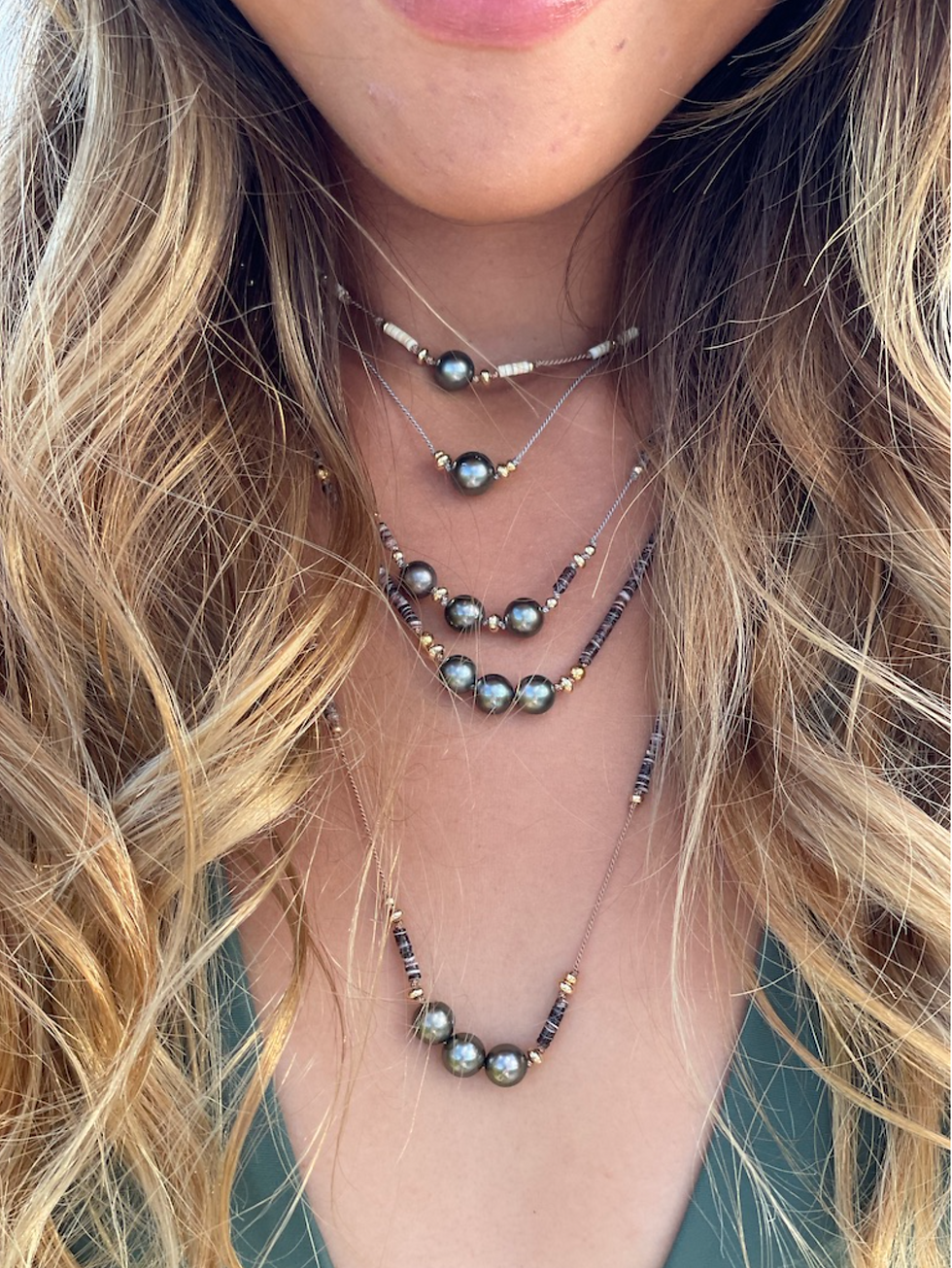
What is your process? What were some of the first pieces and some of the unique pieces you would like to highlight?
A lot of how I approach things is by allowing myself to be inspired by the materials alone. If there is a stone that I see and fall in love with, then I will let myself look at it for a long time before I do something with it. I leave things around for a while until it's clear what I am supposed to do with them. I have to fall in love with the material first; otherwise, I won't use it. It has to have specific energy when I see it or touch if not, I'm not called to have it in my field. When I am called to work intuitively, I will ask people to show me a picture of who they are purchasing something for so I can help them pick out a piece that I think fits them. The photos help me read what this person might be needing or might make them feel good.
I've always loved black and salt and pepper diamonds. I fell in love with this kite-shaped black diamond, so I bought it. I was completely intimidated by it and let it sit for a year before I started a wax carving for it. I knew I wanted it to be in 22 K gold. The richness of that warm yellow has always been a favorite of mine. When I finally finished the wax, I had to let that sit for a while before sending it off to be cast. Then when I got it back, I took some time to set the stone and finish the surface, giving it a lot of texture. It's kind of my superwoman shield.

Are there any specific creatives that inform your work and/or where you go for inspiration?
I'm a visual consumer. Everything I see informs my jewelry making. I can't take a walk without looking at things and falling in love with their form or texture. Nature definitely informs me, as do people. I love seeing how people wear things and what things feel like when they are on another person.

Please tell us about your "Body Based Intuitive Consultation" (Medical Intuitive/Energy Work). What is it? How did you start, and how do clients find you?
My Intuitive work is something that I developed myself. I call it Somatic Intuitive work or Body Based Intuitive Consultation because there isn't a singular template that came before me that encompasses everything I bring to my approach. I have studied and practiced Cranio-Sacral Therapy and Somato-Emotional Release work since 1996. That's been the foundation of how I have come to know and understand bodies. The doctor that I studied under taught us a very specific way of analyzing the body to understand where there is dysfunction, how to hold space for the body's natural ability to heal itself, and how to hold space for a person's emotions. I've had over 30,000 hours of hands-on experience that led me to this current incarnation of my work.
In 2013 I transformed my work into something more coaching-based but somehow integrated my intuitive and energetic work. I had an experience with a client where I was working on her remotely after she'd had open-heart surgery for a myocardial bridge, which is a congenital condition where one of the arteries tunnels through the heart muscle, restricting blood flow. I texted her to say I was starting to focus on her body, and she could relax and just receive whatever was going to happen. I had no agenda or idea of what I would find or what to expect. I figured what I was attempting wouldn't hurt her and maybe could help. After tuning into her heart and looking for anything that might need support, I clearly saw her lungs. They were heavy, dark, and not moving very well. I focused my energy on them and felt like they were trying to absorb everything I could send their way.
At some point, they began to lighten up and get "fluffy." I texted her to say I was done working on her and that I couldn't find anything with her heart but instead focused on her lungs. She reported that during our appointed time, she was coughing and could feel her lungs expanding with the energy work. Apparently, her lung collapsed during the surgery, and they had to pump it back up twice, but it was still not as full as before the surgery. She had not told me about that detail when we checked in before our little experiment. Her lungs were much better after our short 15-minute session.

This was the beginning of my understanding that my ability to see bodies wasn't limited to my ability to touch a body. I also could see and affect people without being near them. This opened up a greater understanding of what kinds of healing were possible. Over time I would do remote sessions with clients when I was traveling or when they couldn't make it to my office. I realized that my approach to remote work was similar to hands-on work and was just as rewarding.
In 2019 I decided I wanted to change my way of working permanently to remote work and give myself a gentle year and a half to do so. I thought to myself, "By May of 2020, I'd like my work to be 80% by phone," and started rolling in that direction. By February 2020, I had 15 new phone clients and built my practice with enthusiasm. As we all know, the pandemic was in full gear, and we went into a shelter-in-place mode, which only gave me further clearance to practice virtually for good. It seems my Spirit knew to set things in motion so I could let go of my 25 years of hands-on work.
The Somatic Intuitive work is a combination of my interest in how our physical bodies reflect and store our emotions. I consider myself a medical intuitive because of my experience with learning and practicing western medical techniques and a thirst for medical information. I also consider myself a consultant/coach because of my approach to helping people resolve their struggles emotionally and physically. I've been heavily influenced by Jett Psaris, author and teacher of her Undefended Love approach to relationships. I also consider myself somatically focused because I am constantly tracking the body's experience alongside the client. And I know I am intuitive/psychic because I can see and feel things about people that they don't tell me directly. I've merged all these things into a graceful approach to holding space for clients.
Most of my clients are word of mouth. I've never found any other way to build a practice. I work off photos they send me before our first session, and I also do a live scan during our call together. I don't predict anything, and I don't tell people what to do with their lives; instead, I give them space to discover what is true for them. I feel so grateful that I get to call this my work. I am ever humbled by my clients and their willingness to be vulnerable, honest, and seek healing.
Let us know a few books you are reading or want to recommend to the withitgirls.
Hidden Blessings by Jett Psaris, Big Magic by Elizabeth Gilbert
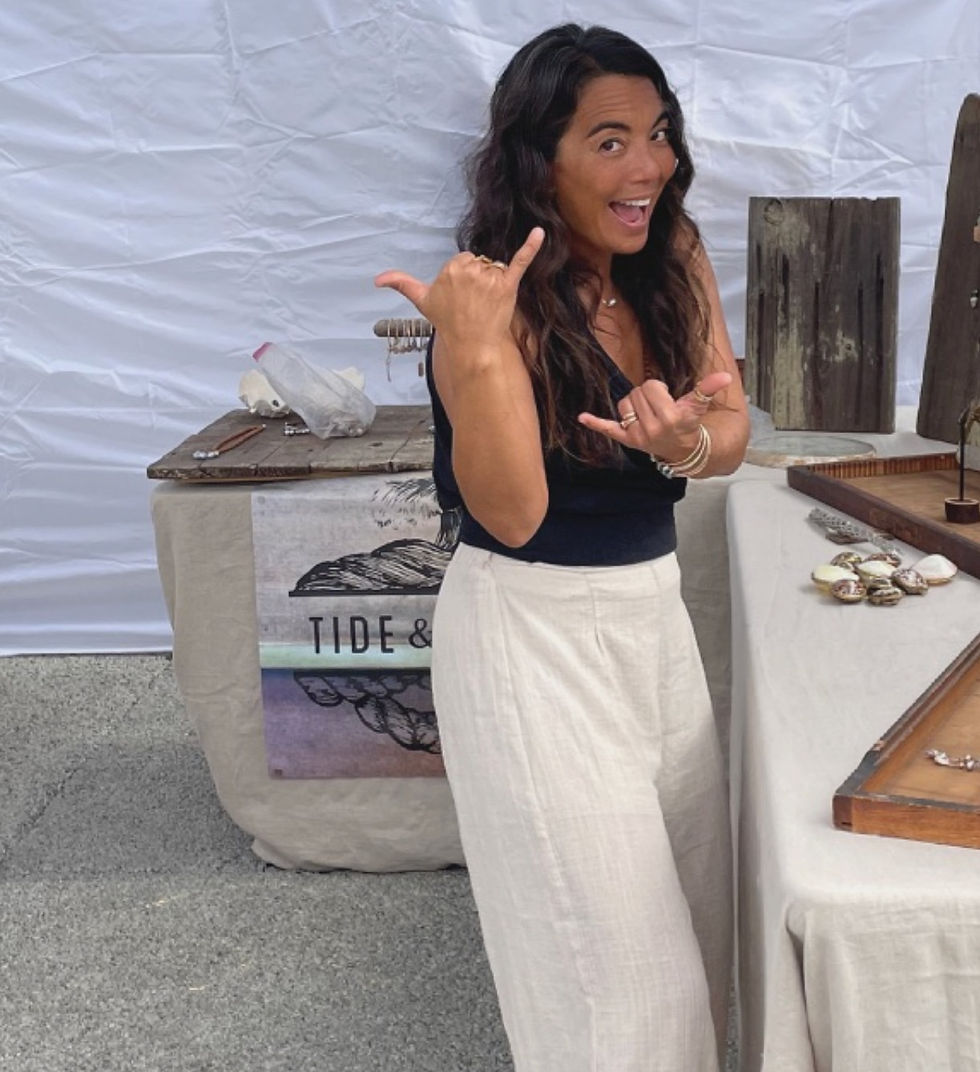
Additional Information

Intuitive work: @forthebodyandspirit and website
© 2020-2022 withitgirl. All rights reserved. We appreciate your feedback!













Comments